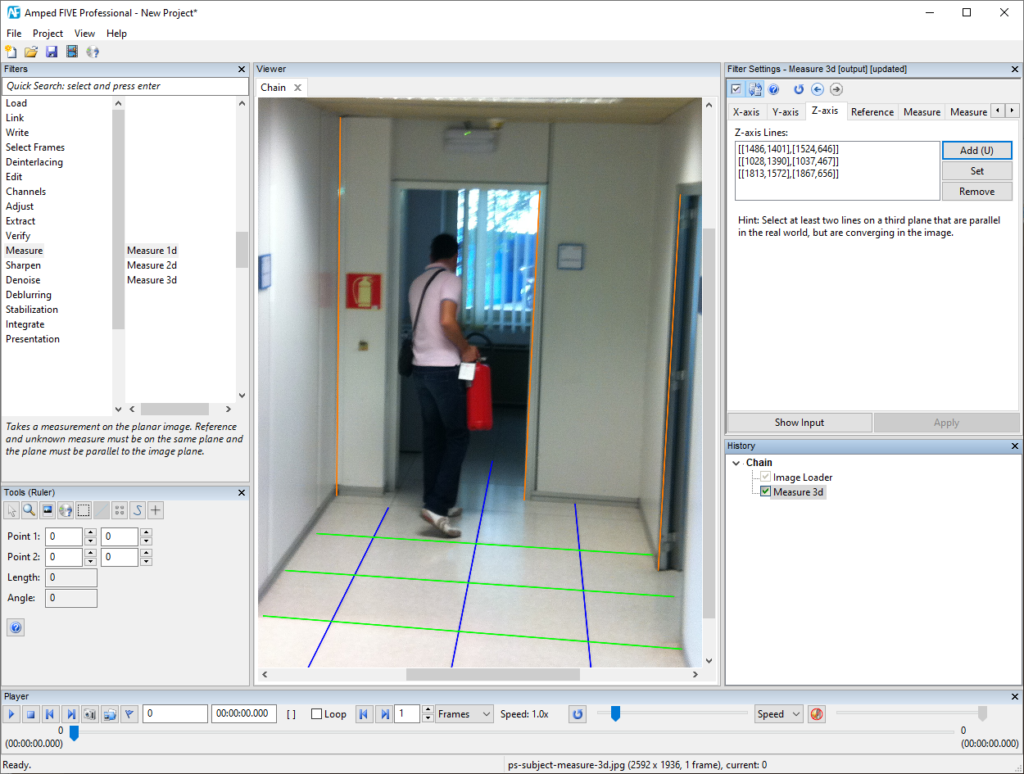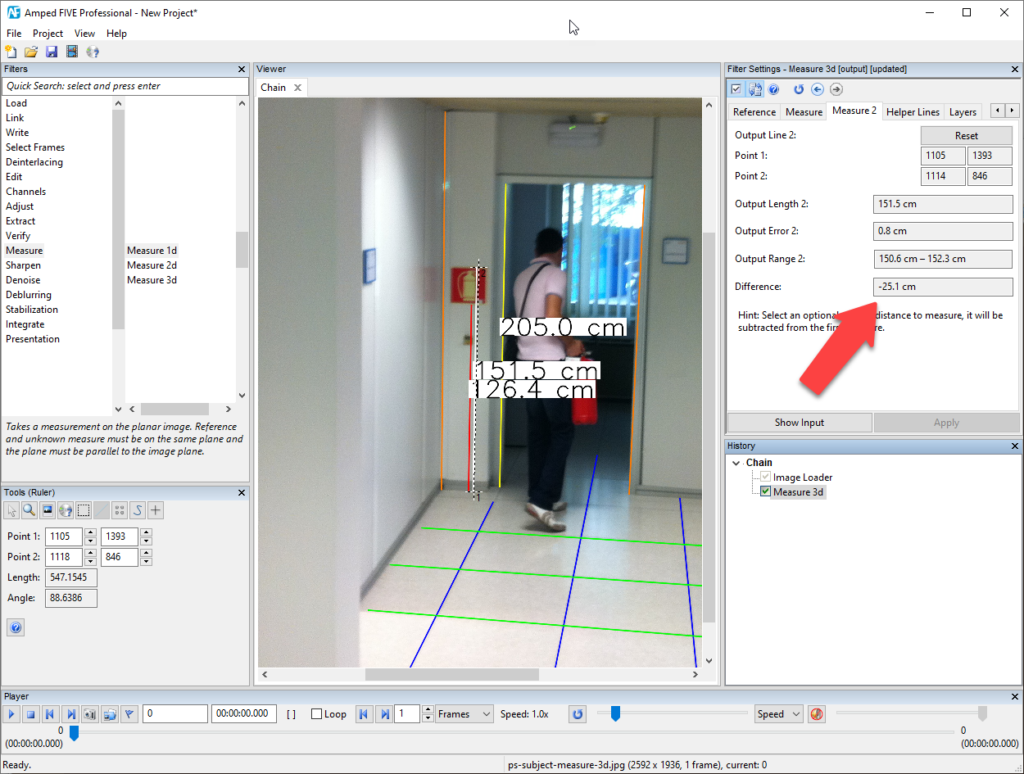Hello Tip Tuesday addicts! Today we’re sharing with you a tip about using Amped FIVE‘s Measure 3D filter to measure objects that are not on the floor. If after reading this sentence you’ve thought “Why should it be an issue if it is not on the floor?!” then we definitely recommend that you read this tip!
Amped FIVE is rich in image and video processing filters that can improve the intelligibility of your data. There are some filters, however, that are special: their purpose is not to create an “enhanced” or “restored” picture but to extract information from your imagery. Filters under the Measure category belong to this special family, with its Measure 3D filter sitting on the throne.
Measure 3D provides an implementation of a Single View Metrology (SVM) algorithm: given an image with certain properties, you can use lines in that image to “calibrate” the camera, set a reference measure, and eventually measure lengths of objects in the picture. Normally, this filter is used to measure the heights of objects or subjects in a scene. One important requirement is that the object you measure sits on the same plane where your reference object sits. Since going into the details of SVM is largely out of scope for a tip, we’ll just use an example to show what this means. Let’s imagine we’re asked to measure the height of the “fire extinguisher” red plate in the image below, knowing that the door jamb is 205 cm high.

We always recommend to first check whether the image is affected by optical distortion. If this is the case, you must first compensate for it with the Undisort or Correct Fisheye filters. In this case, this is not needed, so we just load the image in Amped FIVE and select the Measure 3D tool. Then, we calibrate the camera by drawing a few lines on the two main directions on the floor (aka X- and Y- axes), taking advantage of elements that we know to be parallel in the real world. Then we do the very same for the vertical direction (lines going from the floor to the ceiling, aka Z-axis). The SVM algorithm will use these lines to compute the vanishing point position for the three axes representing our 3D world. Remember: if there are no parallel lines in the scene to be used for calibration, we cannot use the Measure 3D tool (unless we can go to the scene and place a purpose-made carpet with checkers, so as to enforce the presence of such elements). Similarly, if you don’t have any reference measurement, you won’t be able to measure objects (unless you’d like to invent them!).

Now, we’ve been told that the door jamb is 205 cm high, so we can select the Reference tab in the Filter Settings panel, select the jamb and write this data in the “Reference Length” input field:

Okay, now we need to find out the height of the red plate. We could be tempted to click on the Measure tab, and then click on the bottom and on the top of the plate. THIS IS WRONG!

It’s wrong because you must always measure starting from the same plane where your Reference measurement was computed from (in this case, as usual, the ground). So the correct way to measure the plate’s height is to first measure the height of its base, then the height of its top and finally compute the difference. Needless to say, Amped FIVE will assist you in this as well!
Let’s click on Measure tab and select the plate’s base as the measure’s target.

Now, let’s click on Measure 2 and measure the plate’s top height from the ground.

There we go! The plate’s top is 151.5 cm from the ground, the plate’s base is 126.4 cm, so their difference is 25.1 cm, as shown in the “Difference” box in the Filter Settings panel (red arrow in the image above: we get a negative value just because FIVE subtracts the second measurement we’ve taken from the first, but the absolute value is still correct). By the way, in this case, we know that the real measurement of the object is 25.0 cm, so we’ve come up with quite a reliable estimate! Remember, however, that we are just estimating lengths, and the accuracy depends on many factors, among which: calibration accuracy, distortions, resolution.
This week’s take away is: handle with care! Amped FIVE provides a lot of powerful tools, but you need to use them the right way. In today’s example, attempting to directly measure the plate clicking on its bottom and top would have given a totally unrealistic result (66.4 cm)! The best way to get introduced to all of Amped FIVE’s potentialities is by attending a training course: looking forward to meeting you soon!




